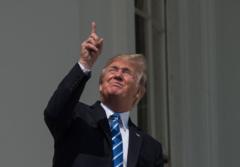Daylight saving time involves clock adjustments—springing forward in March and falling back in November—to maximize daylight usage. According to Pew Research Center, about a third of the world, including much of Europe, observes DST. However, a longstanding argument in the U.S. highlights its negative impacts on health, sleep patterns, and overall wellbeing. Proponents of remaining on standard time argue that more morning light fosters better sleep, while critics of DST emphasize the benefits of brighter evenings for safety and energy conservation.
Trump's proposal is not unique; there have been several attempts to modify or abolish the seasonal clock changes in the U.S. A recent initiative, the Sunshine Protection Act introduced by Senator Marco Rubio, aimed to make daylight saving time permanent but failed to reach President Joe Biden. Notably, Rubio was recently selected by Trump as his secretary of state, indicating a potential shift in legislative focus.
The practice of changing clocks began in the U.S. during World War One to conserve energy. Although it faced opposition from farmers initially and was discontinued post-war, it resurfaced during World War Two and became law in 1966—allowing states to opt-out, which Hawaii and most of Arizona have done.
Recent research by Joan Costa-i-Font of the London School of Economics highlights DST’s adverse effects on sleep and mental health, estimating a potential economic gain of approximately €754 ($792; £627) per person annually should DST be abolished. Countries like Mexico and Jordan have scrapped the practice in recent years, while Turkey and Russia have adopted permanent daylight saving instead.
Public sentiment appears to lean towards permanence, with a Monmouth University poll revealing that about two-thirds of Americans favor making daylight saving time a permanent adjustment. As this ongoing discourse continues, the potential ramifications on health, safety, and economics remain at the forefront.
Trump's proposal is not unique; there have been several attempts to modify or abolish the seasonal clock changes in the U.S. A recent initiative, the Sunshine Protection Act introduced by Senator Marco Rubio, aimed to make daylight saving time permanent but failed to reach President Joe Biden. Notably, Rubio was recently selected by Trump as his secretary of state, indicating a potential shift in legislative focus.
The practice of changing clocks began in the U.S. during World War One to conserve energy. Although it faced opposition from farmers initially and was discontinued post-war, it resurfaced during World War Two and became law in 1966—allowing states to opt-out, which Hawaii and most of Arizona have done.
Recent research by Joan Costa-i-Font of the London School of Economics highlights DST’s adverse effects on sleep and mental health, estimating a potential economic gain of approximately €754 ($792; £627) per person annually should DST be abolished. Countries like Mexico and Jordan have scrapped the practice in recent years, while Turkey and Russia have adopted permanent daylight saving instead.
Public sentiment appears to lean towards permanence, with a Monmouth University poll revealing that about two-thirds of Americans favor making daylight saving time a permanent adjustment. As this ongoing discourse continues, the potential ramifications on health, safety, and economics remain at the forefront.





















